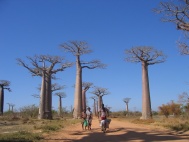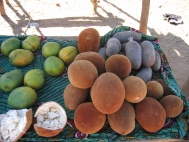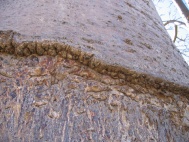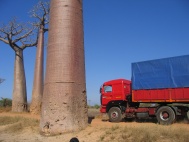Difference between revisions of "Baobab Avenue"
From MadaCamp
| Line 1: | Line 1: | ||
| − | '''Baobab Avenue or Allée de Baobab in French is a cluster of very large [[baobab tree]]s appearing along the road towards [[The Thingy|Tsingy de Bemaraha]] about 15 kilometres east of Morondava.''' | + | '''Baobab Avenue, or Allée de Baobab in French, is a cluster of very large [[baobab tree]]s appearing along the road towards [[The Thingy|Tsingy de Bemaraha]] about 15 kilometres east of Morondava.''' |
[[File:Morondava 0018.jpg|600px|none|thumb|[[Sakalava]] woman at Boabab Avenue]] | [[File:Morondava 0018.jpg|600px|none|thumb|[[Sakalava]] woman at Boabab Avenue]] | ||
Revision as of 16:29, 13 February 2010
Baobab Avenue, or Allée de Baobab in French, is a cluster of very large baobab trees appearing along the road towards Tsingy de Bemaraha about 15 kilometres east of Morondava.
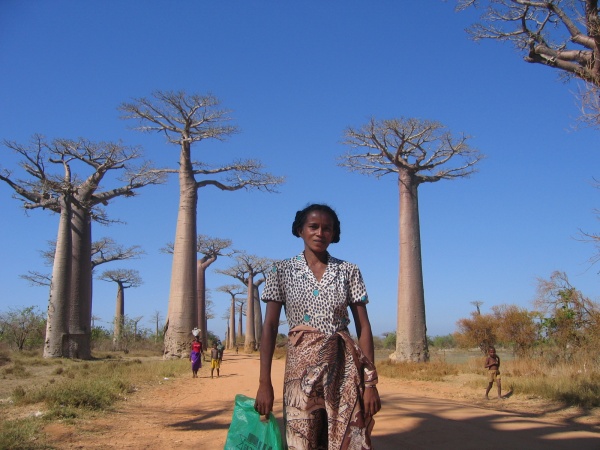
Sakalava woman at Boabab Avenue
The approximately 100 metres stretch appears on many postcards of Madagascar. A tiny village and school which usally welcome visitors is located nearby. The baobab tree is the national tree of Madagascar. The baobab is sometimes said to be an upside-down-tree. In fact, according to ancient Arabic mythology, it is the devil who pulled the tree out of the earth and re-planted it that way.
